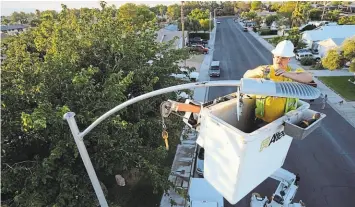steveintoronto
Superstar
The light fixtures in the Great Hall are not great enough for the Great Hall. They are nice, but lack any scale of presence worthy of such a large space. I like the light colour, as it goes well with the structure and material. But the amount of light is not sufficient, and it is not distributed well. It leaves the Great Hall feeling dingy and haggard instead of elegant.
I can now update this. Quick comment revisiting what Don wrote: Clearly he makes good points. The Great Hall looks clean and *sanitary*....but that's the problem, it's lit like a latrine, one built for function, not satisfaction. And even then, not that well lit, at all. I've seen street lighting far more effective in creating a mood, as well as the necessary function of seeing.I'm an electronic technologist, and LEDs have always fascinated me, but what looks good on paper, and what the retina and cortex discern are two very different things. LEDs can be so harsh that even for pilot lights on equipment, (guitar amplifiers, for instance) manufacturers are switching back to filament bulbs. And it's more than just colour temperature and wave-front contiguousness, but that's a whole other discussion in itself.
Here's the future:
http://www.telegraph.co.uk/science/...nt-light-bulbs-as-mit-makes-them-more-effici/
I quickly Googled that, MIT and others have published papers on the web on it. It got scant mention in the mass media, and yet it's re-revolutionary.
Hopefully when lighting is considered for 'Onion' Station, it will be forward compatible with much more *friendly* light.
Some readers mentioned LED lighting, and even though I'm an electronic technologist, and have just finished working on projects utilizing LEDs, huge numbers of them in displays, I ended up at odds with the designers, as I thought LEDs were a harsh, uninviting and *clinical* way of doing it. Plus there are technical issues I won't go into, thus my research into thermally emissive sources (a la filament).
And now the other harshly lit shoe drops!
Streetlights leading to health questions
http://www.pressreader.com/canada/metro-canada-toronto/20160921/281522225561376Councillors ask for study into blue light effects
- Metro Canada (Toronto)
- 21 Sep 2016
- Luke simcoe Metro | toronto
Ethan MillEr/GEtty iMaGEs FilE
City of Las Vegas field electrician John Meier replaces a streetlight with a new LED fixture in 2011.
A plan to convert Toronto’s street lamps to LED lights has a pair of local councillors feeling a bit blue.
Mary-Margaret McMahon and Stephen Holyday are asking the city to study the health effects of LED lights, known for their blue hue.
“If you’ve ever used an iPad or an iPhone at night, you’ll notice it has an effect on your eyes and changes some chemistry,” Holyday told Metro.
The vast majority of street lamps in Toronto use conventional sodium bulbs, but Toronto Hydro has installed 150 LED streetlights on six streets across the city as part of a pilot project.
The bulbs can reduce energy and maintenance costs, said Toronto Hydro spokeswoman Tori Glass. The plan is to eventually roll out the new bulbs citywide.
Before that happens, Holyday and McMahon have some questions about whether the lights will prevent people from getting ample shuteye – or prevent drivers from seeing pedestrians crossing the road.
The American Medical Association recently issued a statement warning the “improper” use of LED streetlights can negatively impact both sleep and safety.
“Brighter residential nighttime lighting is associated with reduced sleep times, dissatisfaction with sleep quality, excessive sleepiness, impaired daytime functioning and obesity,” the association said.
As well, the association found blue LED lights can create worse nighttime glare than conventional lights, decreasing “visual acuity” and “creating a road hazard.”
The medical association suggests cities use LED bulbs with lower light temperatures, thereby reducing the amount of blue light emitted.
Pedestrian advocacy group Walk Toronto says they’re still studying the potential impacts of LED streetlights. However, Walk Toronto member Michael Black said safety should trump any concerns about beauty rest.
Holyday said he’s not opposed to rolling out LED lights, he just wants the city to “get it right.” His joint motion with Coun. McMahon will be considered at next week’s public works and infrastructure committee meeting.
Glass said Toronto Hydro will follow any direction it receives about streetlights from city council.
This comes as absolutely no surprise to me. The strobe effects alone are such that you transmit gigs of bits over optic fibre, LEDs switch on and off at "light speed". Some of that harshness can be addressed by using filtered DC instead of AC current, but it still leaves the colour temp conundrum. LEDs make fluorescents look like the candlelight in Barry Lyndon by comparison.
How Stanley Kubrick Shot Barry Lyndon Using Natural Light ...
The answer, more than ever, is to treat eyes to what they evolved with over the eons: Thermally emitted photons. And that's filament lighting.
I'm intrigued with how warm the Royal York lighting in the pic posted by Don is. Must visit and take a look. Any bets on it being filament? It certainly looks it, unless that pic was filtered. LED lighting is penny-wise, cortex foolish. And LED claimed longevity, btw, is proving to be a crock of cracked crickets, but that's another topic.
http://news.mit.edu/2016/nanophotonic-incandescent-light-bulbs-0111
Last edited:

